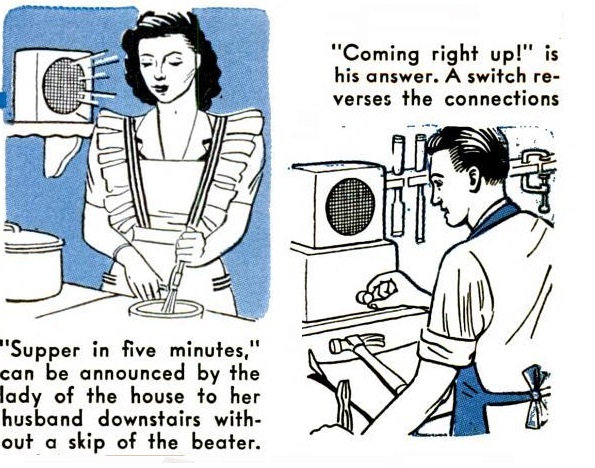 Eighty years ago, there was a war going on, but in his workshop, this gentleman had a power supply capable of putting out 250 volts and six volts. He also had a few tubes lying around, so he put together this audio amplifier, which he used as an intercom. The master station was down in the shop by his power supply, and he mounted a speaker in the kitchen. It was fed with a single wire, with water or steam pipes serving as the second conductor.
Eighty years ago, there was a war going on, but in his workshop, this gentleman had a power supply capable of putting out 250 volts and six volts. He also had a few tubes lying around, so he put together this audio amplifier, which he used as an intercom. The master station was down in the shop by his power supply, and he mounted a speaker in the kitchen. It was fed with a single wire, with water or steam pipes serving as the second conductor.
From the shop, he could monitor what was going on in the kitchen. And when his wife announced that lunch was almost ready, he let her know he was on the way up. The amp could also be used for a phonograph, as shown in the schematic.
The circuit appeared in the January 1944 issue of Popular Science.











